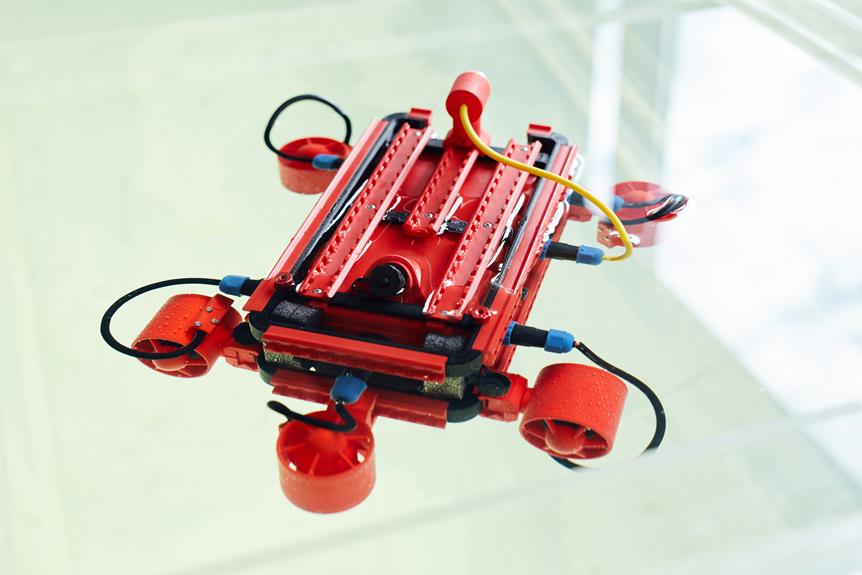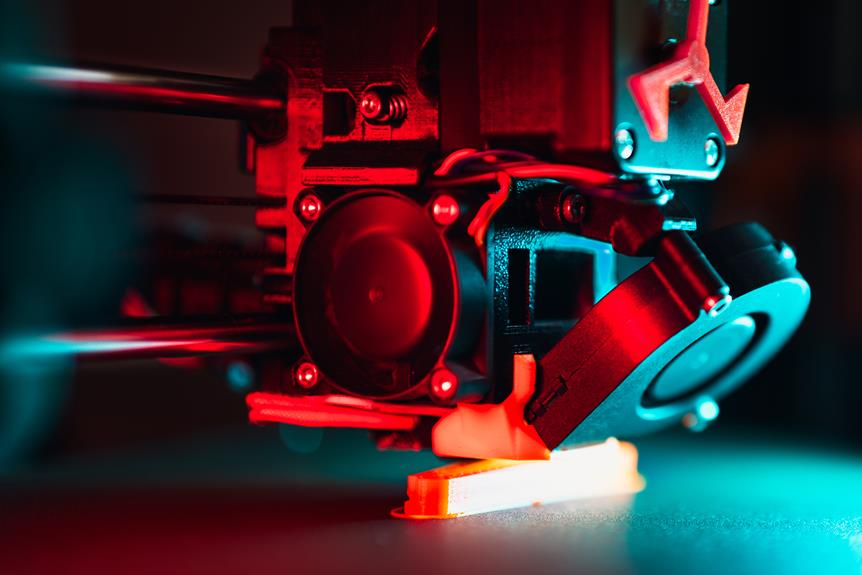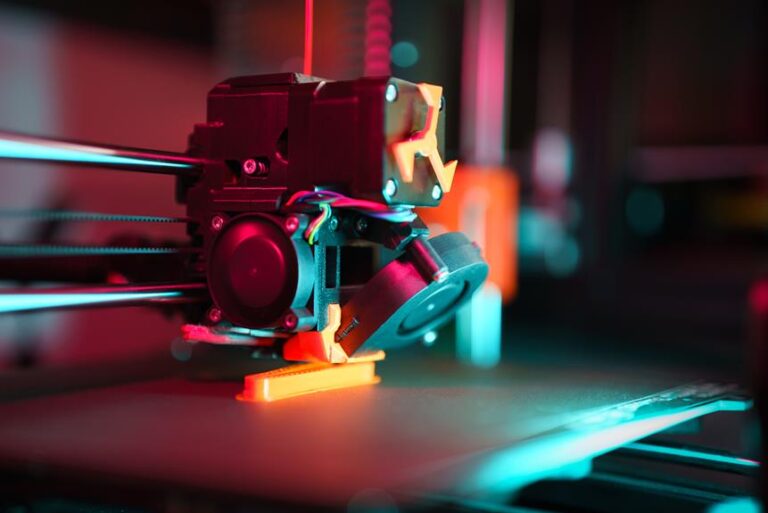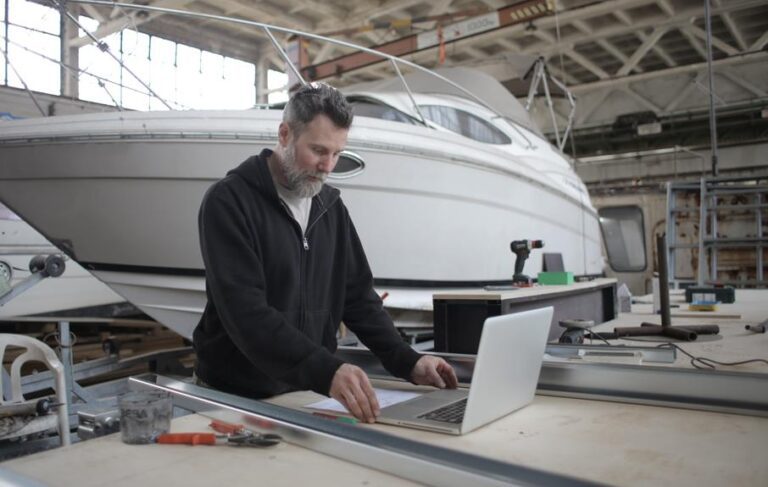Unlocking the Potential of Industrial 3D Printing Services
According to recent industry data, industrial 3D printing services have the potential to revolutionize various sectors by unlocking new levels of efficiency, customization, and cost-effectiveness.
This article explores the untapped possibilities of large-scale 3D printing, the applications across industries, and the advancements in technology that are driving this transformative trend.
With a focus on materials selection, efficiency, cost considerations, and quality assurance, we delve into the future trends and opportunities that await businesses seeking to liberate their manufacturing processes through industrial 3D printing services.
Key Takeaways
- Evolution and advancements in industrial 3D printing services have led to faster and more accurate printing processes.
- The availability of a wide range of materials has expanded the capabilities of 3D printing, enabling cost-effective production solutions for various sectors.
- Industrial 3D printing allows for customization and product innovation, enabling businesses to differentiate themselves and achieve faster time to market.
- Large-scale 3D printing offers significant advantages, such as the production of intricately detailed and massive industrial prototypes, reducing production time and costs, and enabling the manufacturing of larger objects that were previously difficult to produce.
The Evolution of Industrial 3D Printing Services
Throughout the years, industrial 3D printing services have gradually and consistently evolved to meet the growing demands of various industries. The advancements in technology have paved the way for the emergence of on-demand 3D printing services, allowing businesses to access rapid prototyping services with ease.
Industrial 3D printing services have revolutionized the manufacturing landscape by offering a cost-effective and time-efficient solution for producing complex designs and customized products. With the ability to create intricate geometries that were previously impossible with traditional manufacturing methods, industrial 3D printing services have opened up new possibilities for industries such as aerospace, automotive, healthcare, and consumer goods.
The evolution of industrial 3D printing services can be attributed to several factors. First and foremost, the continuous improvement in 3D printing technology has led to faster and more accurate printing processes. This, coupled with the availability of a wide range of materials, has expanded the capabilities of industrial 3D printing services.
Moreover, the rise of on-demand 3D printing services has made it more accessible for businesses of all sizes to leverage the benefits of 3D printing. By outsourcing their printing needs to specialized service providers, companies can save on upfront costs and avoid the need for investing in expensive equipment and expertise.
Applications of Industrial 3D Printing Across Industries
Industrial 3D printing has found diverse applications across industries, revolutionizing traditional manufacturing processes.
With its ability to create complex geometries and intricate designs, it offers cost-effective production solutions for various sectors.
Furthermore, 3D printing enables customization and product innovation, allowing companies to create tailored products that meet specific customer needs and preferences.
Diverse Industry Applications
We can observe a wide range of industry applications for industrial 3D printing across various sectors. This technology has the potential to revolutionize manufacturing processes and open up new possibilities in different industries.
Here are four diverse industry applications of industrial 3D printing:
- Automotive: 3D printing enables the production of complex and lightweight parts, reducing the weight of vehicles and improving fuel efficiency.
- Healthcare: Medical professionals can use 3D printing to create customized implants, prosthetics, and surgical tools, enhancing patient care and outcomes.
- Aerospace: 3D printing allows for the fabrication of intricate components with reduced weight, leading to increased fuel efficiency and improved aircraft performance.
- Architecture: Architects can use 3D printing to create detailed and accurate scale models, facilitating better visualization and design optimization.
These examples highlight the versatility and potential impact of industrial 3D printing across a wide range of industries.
Cost-Effective Production Solutions
One of the most promising applications of industrial 3D printing across industries is its ability to provide cost-effective production solutions. By utilizing 3D printing technology, companies can reduce production costs and increase efficiency in various ways. For instance, it allows for the creation of complex and intricate designs that would be difficult or costly to produce using traditional manufacturing methods. Additionally, 3D printing enables the production of customized products on demand, eliminating the need for costly inventory storage. The following table illustrates some examples of cost-effective production solutions achieved through industrial 3D printing:
| Industry | Application |
|---|---|
| Automotive | Rapid prototyping and tooling |
| Aerospace | Lightweight and complex component production |
| Healthcare | Customized medical devices and implants |
| Consumer Goods | On-demand production of spare parts |
| Architecture | Rapid creation of architectural models |
The cost-saving benefits of industrial 3D printing extend across a wide range of industries, making it an attractive solution for companies seeking to optimize their production processes. This cost-effectiveness is just one aspect of the broader benefits of 3D printing, which also includes customization and product innovation.
Customization and Product Innovation
With the ability to customize products and drive product innovation, industrial 3D printing offers a range of applications across various industries. This advanced technology enables businesses to create unique and personalized products that meet the specific needs and preferences of their customers.
Here are four ways in which customization and product innovation are being revolutionized by industrial 3D printing:
- Customized Manufacturing: Industrial 3D printing allows for the production of highly customized products, tailored to individual requirements. This level of personalization enables companies to offer unique products that stand out in the market.
- Rapid Prototyping: 3D printing enables quick and cost-effective prototyping, allowing for iterative design improvements and faster time to market. This accelerates the product development process and encourages innovation.
- Complex Geometries: Industrial 3D printing technology can produce complex geometries that are difficult or impossible to achieve with traditional manufacturing methods. This opens up new possibilities for design and functionality.
- Spare Parts Production: 3D printing enables on-demand production of spare parts, eliminating the need for large inventories and reducing downtime. This improves efficiency and reduces costs for industries such as automotive, aerospace, and healthcare.
Industrial 3D printing is revolutionizing customization and product innovation across industries, offering unprecedented opportunities for businesses to differentiate themselves and meet the evolving demands of their customers.
Exploring the Advantages of Large-Scale 3D Printing
Large-scale 3D printing offers significant advantages in terms of cost-effective manufacturing solutions and faster production timelines. With the ability to produce larger parts in a single print, companies can reduce material and labor costs, as well as minimize assembly time.
Additionally, large-scale 3D printing enables faster prototyping and product development, allowing businesses to bring their ideas to market more quickly and efficiently.
Cost-Effective Manufacturing Solutions
Exploring the advantages of implementing large-scale 3D printing for cost-effective manufacturing solutions offers numerous benefits to businesses. With advancements in technology, large-scale 3D printing has become more accessible and affordable, enabling companies to streamline their production processes and reduce costs.
Here are four key advantages of using large-scale 3D printing for cost-effective manufacturing:
- Reduced material waste: Large-scale 3D printing allows for precise material usage, minimizing waste and optimizing resource efficiency.
- Faster production times: The ability to print large objects in a single build significantly reduces production time compared to traditional manufacturing methods.
- Cost savings: Large-scale 3D printing eliminates the need for expensive tooling and molds, saving businesses significant upfront costs.
- Design flexibility: 3D printing enables complex geometries and intricate designs, providing businesses with the freedom to create innovative and customized products.
Faster Production Timelines
The implementation of large-scale 3D printing technology offers businesses the advantage of accelerated production timelines, allowing for faster delivery of products to the market. By utilizing this technology, companies can significantly reduce the time required for manufacturing and assembly processes. Traditional manufacturing methods often involve multiple steps, including tooling, molding, and assembly, which can take weeks or even months. However, with large-scale 3D printing, products can be produced in a matter of hours or days, depending on the complexity and size. This streamlined production process not only saves time but also reduces costs associated with tooling and inventory storage. The following table illustrates the potential time savings achieved through large-scale 3D printing compared to traditional manufacturing methods:
| Manufacturing Process | Traditional Methods | Large-Scale 3D Printing |
|---|---|---|
| Tooling | Weeks | N/A |
| Molding | Days | N/A |
| Assembly | Weeks | Hours |
With large-scale 3D printing, companies can unlock faster production timelines, enabling them to respond quickly to market demands and gain a competitive edge.
Materials Selection for Industrial 3D Printing Services
A comprehensive range of suitable materials is essential for achieving optimal results in industrial 3D printing services. The selection of materials plays a crucial role in determining the strength, durability, and overall quality of the printed objects.
Here are four key factors to consider when choosing materials for industrial 3D printing:
- Material compatibility: It is important to select materials that are compatible with the specific 3D printing technology being used. Each printing technology has its own requirements and limitations, and using the wrong material can result in poor print quality or even damage to the printer.
- Mechanical properties: Different industries have different requirements for the mechanical properties of printed parts. Materials should be chosen based on factors such as strength, flexibility, and heat resistance to ensure that the printed objects can perform their intended functions effectively.
- Chemical resistance: Industries such as aerospace, automotive, and healthcare often require printed parts that can withstand exposure to harsh chemicals. Choosing materials with high chemical resistance is crucial to ensure the longevity and reliability of the printed objects.
- Cost-effectiveness: While it is important to select materials that meet the required specifications, it is equally important to consider their cost. Balancing the desired properties with the cost of materials can help optimize the overall efficiency and profitability of industrial 3D printing services.
By carefully considering these factors, businesses can make informed decisions about material selection, leading to better outcomes and unlocking the full potential of industrial 3D printing technology.
Transition: Now that we have discussed the importance of material selection, let's explore the latest innovations in industrial 3D printing technology.
Innovations in Industrial 3D Printing Technology
The field of industrial 3D printing has witnessed significant advancements in materials, leading to new possibilities and applications across various industries. These material innovations have expanded the range of materials that can be used in 3D printing, including metals, ceramics, and even biocompatible materials.
With these advancements, industries such as aerospace, automotive, healthcare, and electronics are leveraging the benefits of 3D printing technology to create complex components, improve product performance, and reduce manufacturing costs.
Material Advancements in 3D Printing
Material advancements in 3D printing have played a crucial role in driving innovations in industrial 3D printing technology. These advancements have expanded the range of materials that can be used in additive manufacturing, enabling the production of more complex and functional parts.
Here are four key ways in which material advancements have contributed to the innovations in industrial 3D printing:
- Enhanced material properties: New materials with improved mechanical, thermal, and chemical properties have been developed, allowing for the production of parts with higher performance and durability.
- Increased material options: The range of materials available for 3D printing has expanded, including metals, polymers, ceramics, and composites, providing manufacturers with a broader selection to choose from.
- Tailored material properties: Advanced material formulations and processing techniques have enabled the customization of material properties, allowing for the creation of parts with specific characteristics and functionalities.
- Multi-material printing: The ability to 3D print with multiple materials in a single build enables the production of complex parts with varying properties and functionalities, opening up new possibilities in design and manufacturing.
These material advancements have revolutionized the industrial 3D printing landscape, enabling the production of highly functional, customized, and complex parts that were previously not possible with traditional manufacturing methods.
Applications in Various Industries
Industrial 3D printing services have revolutionized various industries by enabling the creation of customized and complex parts with unprecedented precision and efficiency. This cutting-edge technology has found applications in a wide range of sectors, including aerospace, automotive, healthcare, and consumer goods.
In the aerospace industry, 3D printing has been used to manufacture lightweight and high-strength components, reducing the weight of aircraft and improving fuel efficiency. It has also allowed for the design and production of intricate geometries that were previously impossible to achieve using traditional manufacturing methods.
In the automotive sector, 3D printing has been employed for rapid prototyping, tooling, and even the production of end-use parts. This has led to faster development cycles, cost savings, and the ability to create complex shapes that enhance performance and functionality.
In the healthcare field, 3D printing has enabled the production of patient-specific implants, prosthetics, and surgical guides. This personalized approach has improved patient outcomes and reduced surgical risks.
Lastly, in the consumer goods industry, 3D printing has opened up new possibilities for customization and personalization. It has allowed for the creation of unique products tailored to individual preferences, thus enhancing customer satisfaction.
Overcoming Challenges in Industrial 3D Printing Services
To successfully navigate the complexities of implementing and optimizing industrial 3D printing services, companies must focus on strategies for overcoming challenges within the rapidly evolving technology landscape. While industrial 3D printing offers immense potential, there are several obstacles that need to be addressed to fully capitalize on its benefits.
Here are four key challenges and strategies for overcoming them:
- Cost-effectiveness: Industrial 3D printing can be expensive, with high upfront costs for equipment and materials. To mitigate this challenge, companies should explore partnerships with 3D printing service providers or invest in shared facilities to reduce expenses.
- Material limitations: The range of materials available for industrial 3D printing is still limited compared to traditional manufacturing processes. To overcome this challenge, companies should collaborate with material suppliers and researchers to develop new materials suitable for 3D printing.
- Quality control: Ensuring consistent quality in 3D printed parts can be challenging due to variations in printing parameters and material properties. Implementing rigorous quality control processes, such as in-process monitoring and post-processing inspections, can help address this challenge.
- Design complexity: Designing parts for 3D printing requires a different approach compared to traditional manufacturing. Companies should invest in training and development programs to equip their engineers with the skills necessary to design complex geometries optimized for 3D printing.
Maximizing Efficiency in Industrial 3D Printing Processes
Efficiently maximizing the potential of industrial 3D printing processes is essential for companies seeking to optimize their manufacturing operations. By improving efficiency, companies can reduce costs, increase productivity, and accelerate time-to-market for their products. To achieve these goals, it is important to focus on various aspects of the 3D printing process, including material selection, design optimization, and production planning.
One key aspect of maximizing efficiency in industrial 3D printing is selecting the right materials for each application. Different materials offer unique properties, such as strength, flexibility, or heat resistance, which can greatly impact the performance of the printed parts. By carefully selecting the appropriate material, companies can ensure that their 3D printed products meet the required specifications while minimizing waste and rework.
Another important factor in maximizing efficiency is design optimization. By leveraging the benefits of 3D printing, such as design freedom and complex geometries, companies can optimize their product designs for improved performance and reduced material usage. This can be achieved through the use of advanced design software and simulation tools, which allow for iterative design improvements and virtual testing before physical production.
Lastly, efficient production planning is crucial for maximizing the throughput of industrial 3D printing processes. This involves optimizing the scheduling and utilization of 3D printers, as well as streamlining post-processing and finishing operations. By carefully planning the production workflow, companies can minimize idle time, reduce lead times, and ensure a smooth and efficient manufacturing process.
In summary, maximizing efficiency in industrial 3D printing processes requires attention to materials, design optimization, and production planning. By focusing on these aspects, companies can unlock the full potential of 3D printing technology and achieve significant improvements in their manufacturing operations.
| Aspect | Importance |
|---|---|
| Material Selection | Crucial for ensuring the desired properties of printed parts and minimizing waste |
| Design Optimization | Enables improved performance and reduced material usage through iterative design improvements |
| Production Planning | Minimizes idle time, reduces lead times, and ensures a smooth and efficient manufacturing process |
Cost Considerations for Industrial 3D Printing Services
One of the key factors to consider when evaluating the feasibility of utilizing 3D printing services is the cost and its impact on the company's financial resources. Industrial 3D printing services can offer numerous benefits, but it is important to carefully assess the associated costs to ensure that the investment aligns with the company's budget and goals.
Here are four cost considerations for industrial 3D printing services:
- Upfront Investment: Implementing 3D printing technology requires an initial investment in hardware, software, and training. It is crucial to evaluate the upfront costs and determine if they can be justified by the potential long-term benefits.
- Material Costs: Different materials used in 3D printing have varying costs. It is essential to assess the material requirements for the desired applications and compare prices from different suppliers to optimize cost efficiency.
- Labor and Maintenance: Operating and maintaining 3D printing equipment requires skilled labor. Companies should factor in the cost of hiring and training personnel, as well as ongoing maintenance and repairs, to ensure smooth operations.
- Post-Processing and Finishing: Depending on the application, post-processing and finishing may be necessary for 3D printed parts. These additional steps can add to the overall cost and require specialized equipment or expertise.
Quality Assurance in Industrial 3D Printing Production
Several factors contribute to ensuring the quality of industrial 3D printing production. One of the most crucial aspects is implementing a robust quality assurance system. Quality assurance in industrial 3D printing production involves a series of processes and measures that ensure that the final product meets the required standards of quality and performance.
The first step in quality assurance is establishing clear and precise specifications for the desired outcome. This includes defining the required dimensions, tolerances, material properties, and surface finish. These specifications serve as a benchmark against which the final product is evaluated.
To ensure quality throughout the production process, it is essential to have strict control over the entire workflow. This includes monitoring and controlling the parameters of the 3D printer, such as temperature, speed, and layer thickness. Regular calibration and maintenance of the equipment are also necessary to avoid deviations and ensure consistent results.
In addition to process control, inspection and testing play a crucial role in quality assurance. This involves conducting regular inspections of the printed parts to check for any defects, such as warping, delamination, or surface roughness. Non-destructive testing techniques, such as X-ray or ultrasonic testing, can be employed to detect internal defects that may not be visible to the naked eye.
Furthermore, it is essential to have a robust documentation system that records all the relevant data and information related to the 3D printing process. This includes details of the printer settings, material properties, inspection results, and any corrective actions taken. This documentation serves as a reference for future production runs and helps identify any recurring issues or trends.
Implementing a robust quality assurance system ensures that the industrial 3D printing production process consistently delivers high-quality parts that meet the required specifications. It helps minimize defects, reduce waste, and improve overall efficiency, ultimately leading to customer satisfaction and the successful unlocking of the potential of industrial 3D printing services.
Future Trends in Industrial 3D Printing Services
The future of industrial 3D printing services holds great promise for revolutionizing manufacturing processes and enabling unprecedented levels of customization. As this technology continues to advance, several future trends are expected to shape the landscape of industrial 3D printing services:
- Increased adoption of metal 3D printing: Metal 3D printing has already gained significant traction in industries such as aerospace, healthcare, and automotive. This trend is expected to continue as advancements in materials and processes make metal 3D printing more accessible and cost-effective.
- Integration of artificial intelligence (AI): AI will play a crucial role in optimizing the design and manufacturing processes of 3D printed parts. Machine learning algorithms will enable faster and more accurate part design, material selection, and parameter optimization, leading to improved efficiency and performance.
- Expansion of 3D printing materials: Currently, most 3D printing is done using plastics and metals. However, the future will bring a wider range of materials, including ceramics, composites, and biomaterials. This expansion of materials will unlock new possibilities for creating functional and customized parts.
- Advancements in multi-material printing: Multi-material 3D printing will allow the creation of complex, multi-functional parts with varying mechanical, electrical, or chemical properties. This capability will enable the production of highly customized products that were previously unattainable.
As these future trends unfold, industrial 3D printing services will continue to evolve, empowering manufacturers to push the boundaries of what is possible in terms of design complexity, customization, and efficiency.
Frequently Asked Questions
What Are the Different Types of Industrial 3D Printing Technologies Available?
There are several types of industrial 3D printing technologies available, each with its own unique capabilities and applications. These include selective laser sintering (SLS), fused deposition modeling (FDM), stereolithography (SLA), and digital light processing (DLP).
How Can Industrial 3D Printing Services Benefit the Aerospace Industry?
Industrial 3D printing services can benefit the aerospace industry by enabling the production of complex and lightweight components, reducing costs and lead times, and facilitating rapid prototyping. For example, Airbus has used 3D printing to manufacture cabin brackets, leading to weight reduction and fuel savings.
What Are the Key Factors to Consider When Selecting Materials for Industrial 3D Printing?
When selecting materials for industrial 3D printing, key factors to consider include compatibility with the printing process, mechanical properties, chemical resistance, thermal stability, and cost-effectiveness. These considerations ensure optimal performance and successful implementation of 3D printing technologies.
How Has Industrial 3D Printing Technology Evolved Over the Years?
Industrial 3D printing technology has evolved significantly over the years, with advancements in materials, printing speed, and precision. This has led to increased adoption across various industries, unlocking new possibilities for manufacturing and prototyping.
What Are Some of the Common Challenges Faced in Industrial 3D Printing Services and How Can They Be Overcome?
Common challenges in industrial 3D printing services include high costs, limited material options, and slow print speeds. These can be overcome by investing in research and development, improving printer technology, and collaborating with material suppliers for a wider range of options.
Conclusion
In conclusion, industrial 3D printing services are revolutionizing various industries by unlocking new possibilities and efficiencies.
The evolution of technology, advancements in materials selection, and innovations in large-scale printing have paved the way for transformative applications.
While cost considerations and quality assurance remain important factors, the future of industrial 3D printing services holds tremendous potential for further advancements and growth.
As this technology continues to evolve, it will undoubtedly shape the future of manufacturing and production processes, offering limitless possibilities for innovation and efficiency.









